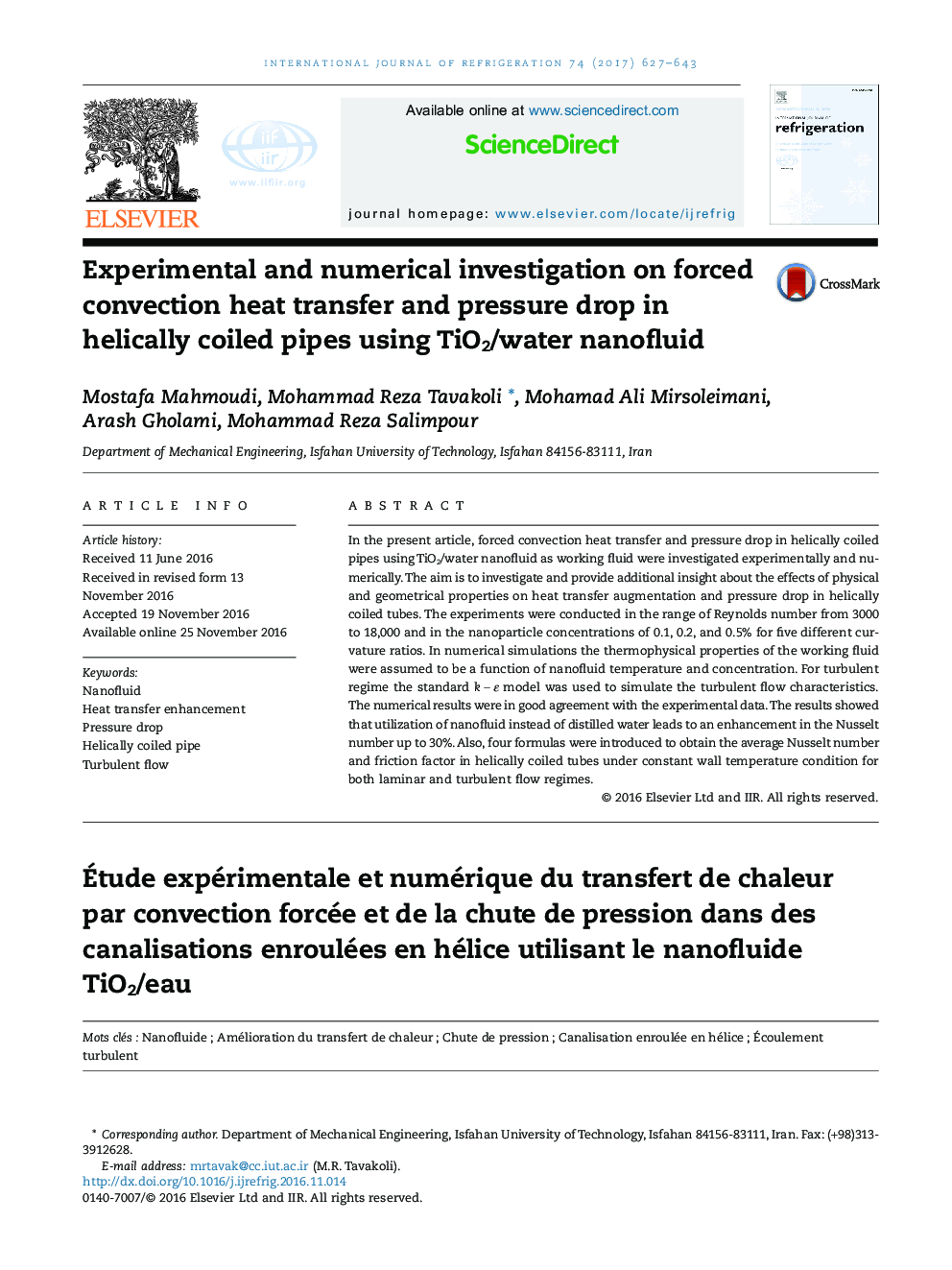| کد مقاله | کد نشریه | سال انتشار | مقاله انگلیسی | نسخه تمام متن |
|---|---|---|---|---|
| 5017344 | 1466391 | 2017 | 17 صفحه PDF | دانلود رایگان |

- A 30% enhancement in heat transfer coefficient was achieved.
- Increasing the Dean number at fixed Reynolds number increases the heat transfer.
- The friction factor is an ascending function of nanoparticle concentration.
- Four general correlations for the Nusselt number and friction factor were proposed.
In the present article, forced convection heat transfer and pressure drop in helically coiled pipes using TiO2/water nanofluid as working fluid were investigated experimentally and numerically. The aim is to investigate and provide additional insight about the effects of physical and geometrical properties on heat transfer augmentation and pressure drop in helically coiled tubes. The experiments were conducted in the range of Reynolds number from 3000 to 18,000 and in the nanoparticle concentrations of 0.1, 0.2, and 0.5% for five different curvature ratios. In numerical simulations the thermophysical properties of the working fluid were assumed to be a function of nanofluid temperature and concentration. For turbulent regime the standard kâââε model was used to simulate the turbulent flow characteristics. The numerical results were in good agreement with the experimental data. The results showed that utilization of nanofluid instead of distilled water leads to an enhancement in the Nusselt number up to 30%. Also, four formulas were introduced to obtain the average Nusselt number and friction factor in helically coiled tubes under constant wall temperature condition for both laminar and turbulent flow regimes.
Journal: International Journal of Refrigeration - Volume 74, February 2017, Pages 627-643